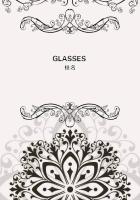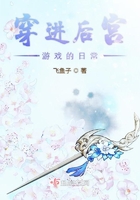Length -- 6 to 7 inches. About the size of the English sparrow.
Male -- General color Indian red, passing into brownish gray, with red tinge beneath. Wings (without bands), also tail, brown, Beak crossed at the tip.
Female -- General color greenish yellow, with brownish tints.
Dull-yellowish tints on head, throat, breast, and underneath.
Wings and tail pale brown. Beak crossed at tip.
Range -- Pennsylvania to northern British America. West of Mississippi, range more southerly.
Migrations -- Irregular winter visitor. November. Sometimes resident until April.
It is a rash statement to say that a bird is rare simply because you have never seen it in your neighborhood, for while you are going out of the front door your rara avis may be eating the crumbs about your kitchen. Even with our eyes and ears constantly alert for some fresh bird excitement, our phlegmatic neighbor over the way may be enjoying a visit from a whole flock of the very bird we have been looking and listening for in vain all the year. The red crossbills are capricious little visitors, it is true, but by no means uncommon.
About the size of an English sparrow, of a brick or Indian red color, for the most part, the peculiarity of its parrot-like beak is its certain mark of identification.
Longfellow has rendered into verse the German legend of the crossbill, which tells that as the Saviour hung upon the cross, a little bird tried to pull out the nails that pierced His hands and feet, thus twisting its beak and staining its feathers with the blood.
At first glance the birds would seem to be hampered by their crossed beaks in getting at the seeds in the pine cones -- a superficial criticism when the thoroughness and admirable dexterity of their work are better understood.
Various seeds of fruits, berries, and the buds of trees enlarge their bill of fare. They are said to be inordinately fond of salt. Mr. Romeyn B. Hough tells of a certain old ice-cream freezer that attracted flocks of crossbills one winter, as a salt-lick attracts deer. Whether the traditional salt that may have stuck to the bird's tail is responsible for its tameness is not related, but it is certain the crossbills, like most bird visitors from the far north, are remarkably gentle, friendly little birds. As they swing about the pine trees, parrot-fashion, with the help of their bill, calling out kimp, kimp, that sounds like the snapping of the pine cones on a sunny day, it often seems easily possible to catch them with the hand.
There is another species of crossbill, called the White-winged (Loxia leucoptera), that differs from the preceding chiefly in having two white bands across its wings and in being more rare.
THE REDPOLL (Acanthis linaria) Finch family Called also: REDPOLL LINNET; LITTLE SNOWBIRD; LESSER REDPOLL;[COMMON REDPOLL, AOU 1998]
Length -- 5.25 to 5.5 inches. About an inch shorter than the English sparrow.
Male -- A rich crimson wash on head, neck, breast, and lower back, that is sometimes only a pink when we see the bird in midwinter. Grayish-brown, sparrowy feathers show underneath the red wash. Dusky wings and tail, the feathers more or less edged with whitish. Soiled white underneath; the sides with dusky streaks. Bill sharply pointed.
Female -- More dingy than male, sides more heavily streaked, and having crimson only on the crown.
Range -- An arctic bird that descends irregularly into the Northern United States.
Migrations -- An irregular winter visitor.
"Ere long, amid the cold and powdery snow, as it were a fruit of the season, will come twittering a flock of delicate crimson-tinged birds, lesser redpolls, to sport and feed on the buds just ripe for them on the sunny side of a wood, shaking down the powdery snow there in their cheerful feeding, as if it were high midsummer to them." Thoreau's beautiful description of these tiny winter visitors, which should be read entire, shows the man in one of his most sympathetic, exalted moods, and it is the best brief characterization of the redpoll that we have.
When the arctic cold becomes too cruel for even the snow-birds and crossbills to withstand, flocks of the sociable little redpolls flying southward are the merest specks in the sullen, gray sky, when they can be seen at all. So high do they keep that often they must pass above our heads without our knowing it.
First we see a quantity of tiny dots, like a shake of pepper, in the cloud above, then the specks grow larger and larger, and finally the birds seem to drop from the sky upon some tall tree that they completely cover -- a veritable cloudburst of birds. Without pausing to rest after the long journey, down they flutter into the weedy pastures with much cheerful twittering, to feed upon whatever seeds may be protruding through the snow. Every action of a flock seems to be concerted, as if some rigid disciplinarian had drilled them, and yet no leader can be distinguished in the merry company. When one flies, all fly; where one feeds, all feed, and by some subtle telepathy all rise at the identical instant from their feeding ground and cheerfully twitter in concert where they all alight at once. They are more easily disturbed than the goldfinches, that are often seen feeding with them in the lowlands;nevertheless, they quite often venture into our gardens and orchards, even in suburbs penetrated by the trolley-car.
Usually in winter we hear only their lisping call-note; but if the birds linger late enough in the spring, when their "fancy lightly turns to thoughts of love," a gleeful, canary-like song comes from the naked branches, and we may know by it that the flock will soon disappear for their nesting grounds in the northern forests.
The Greater Redpoll (Acanthis linaria rostrata) may be distinguished from the foregoing species by its slightly larger size, darker upper parts, and shorter, stouter bill. But the notes, habits, and general appearance of both redpolls are so nearly identical that the birds are usually mistaken for each other.















